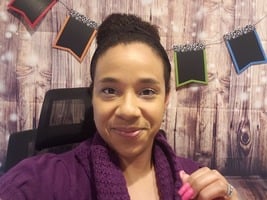In 1992, the American Academy of Pediatrics released the first safe sleep guidelines, and in 1994 it initiated the "Back to Sleep" campaign. The rate of SIDS was cut in half after pediatricians began recommending "back to sleep," and from 1990-2013, the rate of SIDS decreased from 130/100,000 births to just below 40/100,000 births. (http://www.cdc.gov/sids/data.htm)
Safe Sleep Recommendations – More Than Just "Back to Sleep"
Since the early 1990s, we've learned more about the ideal sleep environment. The American Academy of Pediatrics released an updated guideline on safe sleep in 2011. Here are some important highlights on infant sleep practices:
- Place a baby on her back every time she is going to sleep, not on her sides or on her stomach. Every time!
- Place a baby to sleep on a firm surface like a bassinet or a crib mattress, not a car seat or a couch cushion.
- Avoid soft bedding, heavy blankets, stuffed animals, or any other objects. They pose a risk for suffocation. They may look cute and snuggly, but the baby doesn't care!
- Keep the baby's environment tobacco smoke-free.
- Avoid overheating. Most babies are comfortable in one additional layer of clothing than you; the ideal temperature for a baby's room is between 65-68 degrees F.
- After breastfeeding has been established, offer a pacifier for naps and bedtime. Pacifiers seem to provide a slight protection against SIDS, although we're not sure why.
Many adults (myself included) sleep best buried under a mountain of blankets, but babies are different! A young infant may be completely comfortable in a onesie and a sleeper. Better yet, use a sleep sack, which zips around the baby's feet and has "wings" to wrap around the arms so he doesn't startle himself in the night. Swaddling with a light receiving blanket is OK too, as long as you don't use a plush fluffy blanket and the swaddle does not cover the baby's face. However, if your baby sleeps well with his arms and legs unwrapped (in a sleeper or shirt-and-pants style PJs), more power to him! There's no rule that babies have to be wrapped up or covered.
There are many commercially-available products marketed to reduce SIDS. Don't waste your money! Sleep positioners (rolled up blankets, bumper pads, foam or mesh pads, wedges, etc.) don't prevent injuries and may actually increase the risk of SIDS or entrapment.
While "back to sleep" is the safest, don't forget about "tummy time" when your baby is awake. Tummy time, even for a few minutes scattered throughout the day, helps develop head control and visual skills and prevents a flat head.
Co-Sleeping or Bed-Sharing
The topic of co-sleeping or co-bedding is a little more controversial. The AAP guideline discourages co-bedding (putting the baby to sleep in the same bed with a parent), but encourages room-sharing (putting babies to sleep in a crib or bassinet in the same room as the parent). This recommendation is based on evidence that suggests an increased risk of SIDS when a baby sleeps in bed with an adult. About 70% of SIDS cases occurred when the baby was sleeping on a surface that was not meant for infant sleep. However, the Academy of Breastfeeding Medicine (ABM) takes a different stance. In their opinion, there is not enough research to definitively say that all co-sleeping or bed sharing is dangerous. If done properly, the ABM says, co-sleeping may be safe and can foster more successful breastfeeding.
I realize that many readers choose to co-sleep as a deliberate part of their lifestyle and parenting style. I also realize that many parents may unintentionally end up co-sleeping from time to time when they fall asleep in bed or on the couch holding their baby. I'm not going to weigh in one way or the other, but it is wise to take some steps to ensure as safe a sleep environment as possible for your baby:
- Place the baby on her back to sleep, wherever she is sleeping.
- Place the baby to sleep on a flat, firm surface, and avoid sharing couches, sofas, and soft or loose bedding.
- Avoid duvets, quilts, comforters, pillows, and stuffed animals. Never place a baby to sleep on a pillow.
- If you’re using blankets, tuck them in on the sides of the bed to avoid covering the baby's head.
- Never leave a baby alone in an adult bed.
- Babies should not share a bed with other children.
- Babies should not share a bed with an adult who drinks alcohol or takes medications that impair his or her ability to wake up.
Sources
Moon RY, et al; Task Force on Sudden Infant Death Syndrome. SIDS and other sleep-related infant deaths: expansion of recommendations for a safe infant sleeping environment. Pediatrics. 128(5):2011
Sudden Unexplained Infant Death and Sudden Infant Death Syndrome. Centers for Disease Control and Prevention http://www.cdc.gov/sids/data.htm accessed Nov 23, 2015.
The Academy of Breastfeeding Medicine Protocol Committee. ABM Protocol #6: Guideline on Co-Sleeping and Breastfeeding. Breastfeeding Medicine, 1(3):2008
Dr. Ben Kleifgen is a pediatrician with First Steps Pediatrics and Adolescent Medicine in western Pennsylvania and surrounding areas of West Virginia and Ohio. He graduated from Temple University School of Medicine and completed his pediatric residency at the University of Arizona in Tucson.


